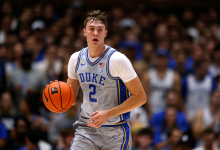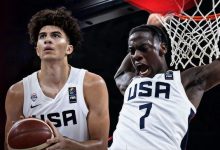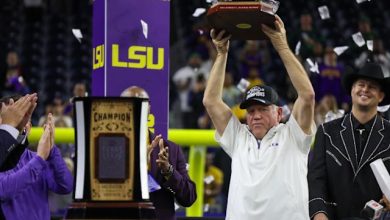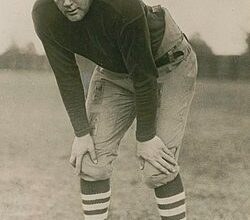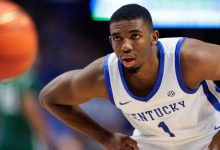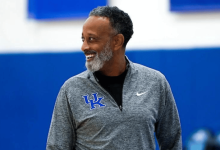Yes, pairing Deandre Ayton with the Lakers makes sense; he provides rim protection, rebounding, and scoring inside, complementing their perimeter shooters and enabling versatile, flexible lineups.

The Los Angeles Lakers, one of the most storied franchises in NBA history, are continually seeking ways to strengthen their roster and push toward another championship. As they evaluate their options during the offseason, a potential pairing with Deandre Ayton emerges as a compelling possibility. Ayton, a talented center known for his rebounding, rim protection, and scoring ability, could fit well into Lakers’ plans if integrated correctly.
This analysis explores whether Deandre Ayton and the Lakers are a good match, how their playing styles could complement each other, and what strategic adjustments might be necessary. We’ll examine Ayton’s strengths, the Lakers’ needs, and the potential benefits and drawbacks of such a pairing, ultimately providing a comprehensive view of how this combination could work on the court.
Deandre Ayton’s Profile: Strengths and Limitations
Strengths
1. Rim Protection and Defense:
Ayton is an excellent shot-blocker and rim protector. His length, instincts, and timing allow him to contest shots effectively around the basket, making him a valuable defensive anchor.
2. Rebounding:
He is a strong rebounder on both ends, particularly on the defensive glass. His ability to secure rebounds helps limit second-chance opportunities for opponents and jump-start fast breaks.
3. Scoring Inside:
Ayton is efficient around the rim, with a soft touch and a variety of finishes. His ability to score in the paint makes him a reliable option for inside scoring.
4. Pick-and-Roll Play:
He excels in pick-and-roll situations, setting solid screens and rolling to the basket with agility. His offensive game complements perimeter-oriented playmakers.
Limitations
1. Mid-Range and Perimeter Shooting:
Ayton’s shooting beyond the restricted area is inconsistent. His lack of perimeter shooting can be a limitation in spacing the floor.
2. Free Throw Shooting:
His free throw percentage has been below average, which sometimes leads to intentional fouling and limits his late-game utility.
3. Defensive Versatility:
While a good rim protector, Ayton is less effective defending on the perimeter against stretch bigs or mobile forwards.
4. Offensive Versatility:
He primarily scores around the basket; he’s less of a threat as a ball-handler or playmaker.
The Lakers’ Needs and Strategic Fit
Current Roster Composition
The Lakers have a core of LeBron James and Anthony Davis, along with role players and shooters. Their offensive scheme relies heavily on perimeter shooting, pick-and-roll actions, and versatile defense.
Key needs include:
- Interior Defense and Rebounding:
Enhancing rim protection and securing rebounds to limit second-chance points. - Scoring Inside:
Having a reliable inside scorer to alleviate pressure on perimeter shooters. - Defensive Versatility:
A defender capable of switching and guarding multiple positions. - Spacing:
While the Lakers focus on interior presence, floor spacing remains crucial, especially with perimeter stars like LeBron and potentially new shooters.
How Ayton Fits
Ayton’s strengths directly address many of these needs:
- Defense and Rebounding:
His shot-blocking and rebounding would bolster the Lakers’ interior defense and help control the glass. - Inside Scoring:
He can be a dependable option for scoring in the paint, especially in pick-and-roll situations with LeBron or other playmakers. - Floor Spacing:
While not a perimeter threat himself, Ayton’s presence can create space for shooters by drawing attention to the paint.
Potential Adjustments
To maximize Ayton’s fit, the Lakers might need to:
- Add shooting around him:
Incorporate perimeter shooters to stretch the floor, reducing the risk of clogging the paint. - Implement specific defensive schemes:
Use zone or switch-heavy defenses to cover Ayton’s perimeter limitations. - Optimize ball movement:
Leverage quick ball movement to find Ayton in advantageous positions near the basket.
How It Could Work on the Court: Tactical Approach
Offensive Strategy
Pick-and-Roll and Roll-Man:
Ayton’s proficiency in pick-and-roll situations makes him an ideal roll man. LeBron, D’Angelo Russell, or other playmakers can initiate pick-and-rolls, with Ayton rolling to the basket for high-percentage finishes.
Post-Ups and Interior Play:
While not a traditional post-up center, Ayton can establish position in the paint and finish efficiently. The Lakers could design plays to get him touches in the low block, especially in mismatch situations.
Spacing and Shooting:
To prevent clogging the paint, the Lakers should surround Ayton with shooters like Austin Reaves, Gabe Vincent, and others. This spacing allows Ayton to operate effectively without defenders sagging into the paint.
Defensive Strategy
Protect the Rim:
Ayton’s shot-blocking and rebounding would serve as the backbone of Lakers’ interior defense, helping to contain opposing bigs and protect the basket.
Switching and Help Defense:
While Ayton is less versatile against perimeter threats, the Lakers’ perimeter defenders and switch-heavy schemes can compensate. They could assign Ayton to guard the paint while perimeter players switch on outside shooters.
Rebounding:
Securing defensive rebounds would limit second-chance opportunities, which is crucial in playoff situations.
Benefits of the Ayton-Lakers Pairing
1. Enhanced Interior Defense
Ayton’s shot-blocking and rebounding would significantly improve the Lakers’ defensive resilience, especially against teams with dominant post players or interior scoring threats.
2. Reliable Inside Scoring
Having a consistent interior scorer like Ayton eases scoring pressure on perimeter players and provides a reliable option in crunch time.
3. Complementary Skill Sets
Ayton’s pick-and-roll effectiveness pairs well with LeBron, who excels at penetrating and creating opportunities for cutters and rollers.
4. Defensive Versatility
While Ayton isn’t a perimeter defender, his rim protection and rebounding add a layer of defense, allowing perimeter defenders to focus on perimeter coverage.
5. Flexibility in Lineups
Ayton’s skill set allows for multiple lineup configurations—either alongside Anthony Davis or as a primary center—giving the Lakers tactical flexibility.
Challenges and Considerations
1. Floor Spacing
Since Ayton isn’t a perimeter threat, the Lakers must emphasize perimeter shooting to prevent defenses from collapsing into the paint. Failure to do so could limit offensive efficiency.
2. Fit with Anthony Davis
If the Lakers plan to pair Ayton with Davis in the frontcourt, they need to consider spacing and defensive schemes. Both are primarily interior players, and their combined presence could clog the paint unless complemented by shooters.
3. Defensive Limitations
Ayton’s less effective against mobile stretch bigs or perimeter-oriented forwards could pose challenges against certain lineups.
4. Financial Considerations
Depending on contract negotiations, acquiring Ayton might require salary cap maneuvers or trades involving assets. The Lakers must weigh the cost against potential benefits.
Potential Scenarios and Lineup Configurations
Scenario 1: Ayton as the Primary Center
- Lineup: LeBron, Reaves, Austin Reaves, Rui Hachimura, Ayton
- Advantages: Strong interior defense, rebounding, and inside scoring; perimeter shooters surround Ayton.
- Challenges: Need for perimeter shooting to maximize spacing.
Scenario 2: Ayton and Anthony Davis Together
- Lineup: LeBron, Davis, Ayton, shooters
- Advantages: Defensive versatility with two rim protectors; interior dominance.
- Challenges: Potential spacing issues; need to incorporate shooters to open the floor.
Scenario 3: Ayton as a Sixth Man or Rotation Piece
- Role: Off the bench to provide interior defense and rebounding, relieving Davis or other starters.
- Advantages: Depth and flexibility; strategic matchups.
Final Verdict: Do the Lakers and Deandre Ayton Make Sense Together?
Yes, in many respects, pairing Deandre Ayton with the Lakers makes sense. His skill set complements the Lakers’ needs—particularly rebounding, rim protection, and inside scoring—while his presence can help the team contend for another championship. However, the success of this pairing hinges on strategic roster construction: emphasizing perimeter shooting to offset Ayton’s limitations, optimizing defensive schemes, and ensuring positional spacing.
If the Lakers can integrate Ayton effectively—adding shooters, designing tailored offensive plays, and leveraging his defensive strengths—they could greatly enhance their championship chances. The pairing offers a blend of inside-outside balance, defensive resilience, and tactical flexibility that is attractive for a team aiming to compete at the highest level.
Of course, real-world factors such as contract negotiations, team chemistry, and coaching strategies will ultimately determine whether this pairing becomes a reality—and, if so, how successful it can be on the court.

